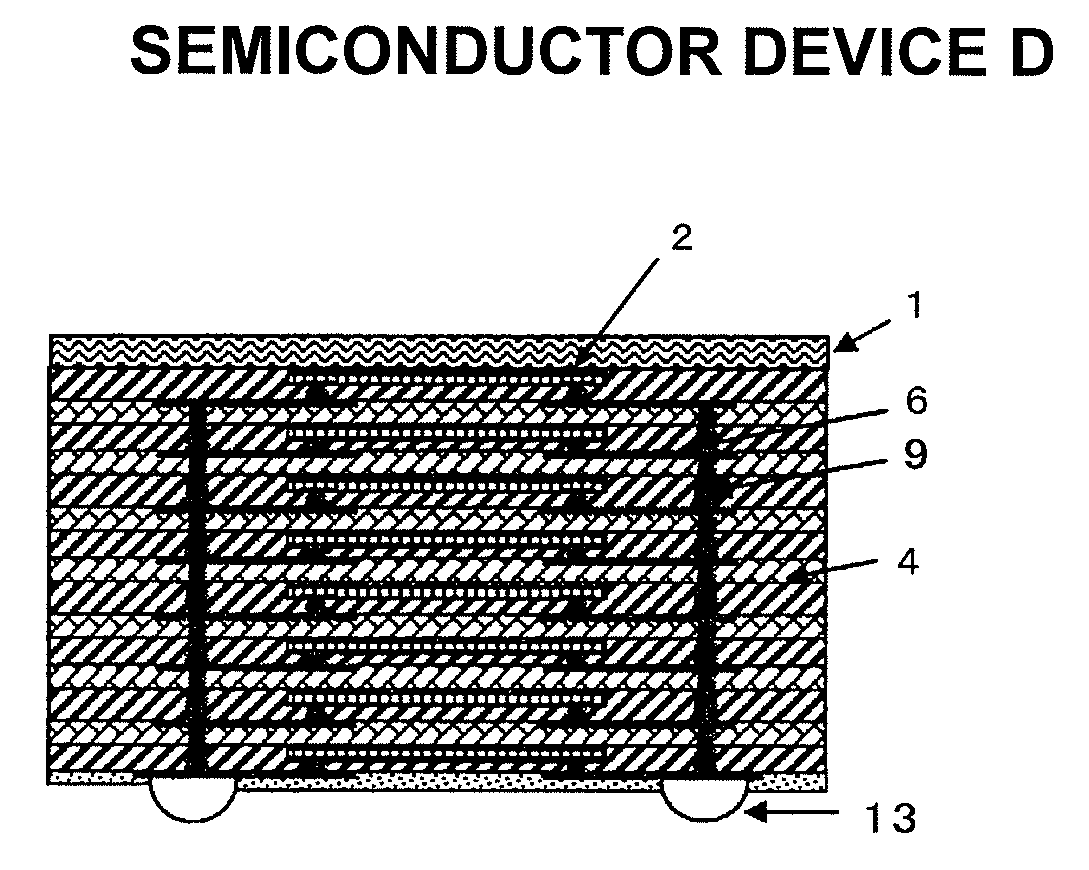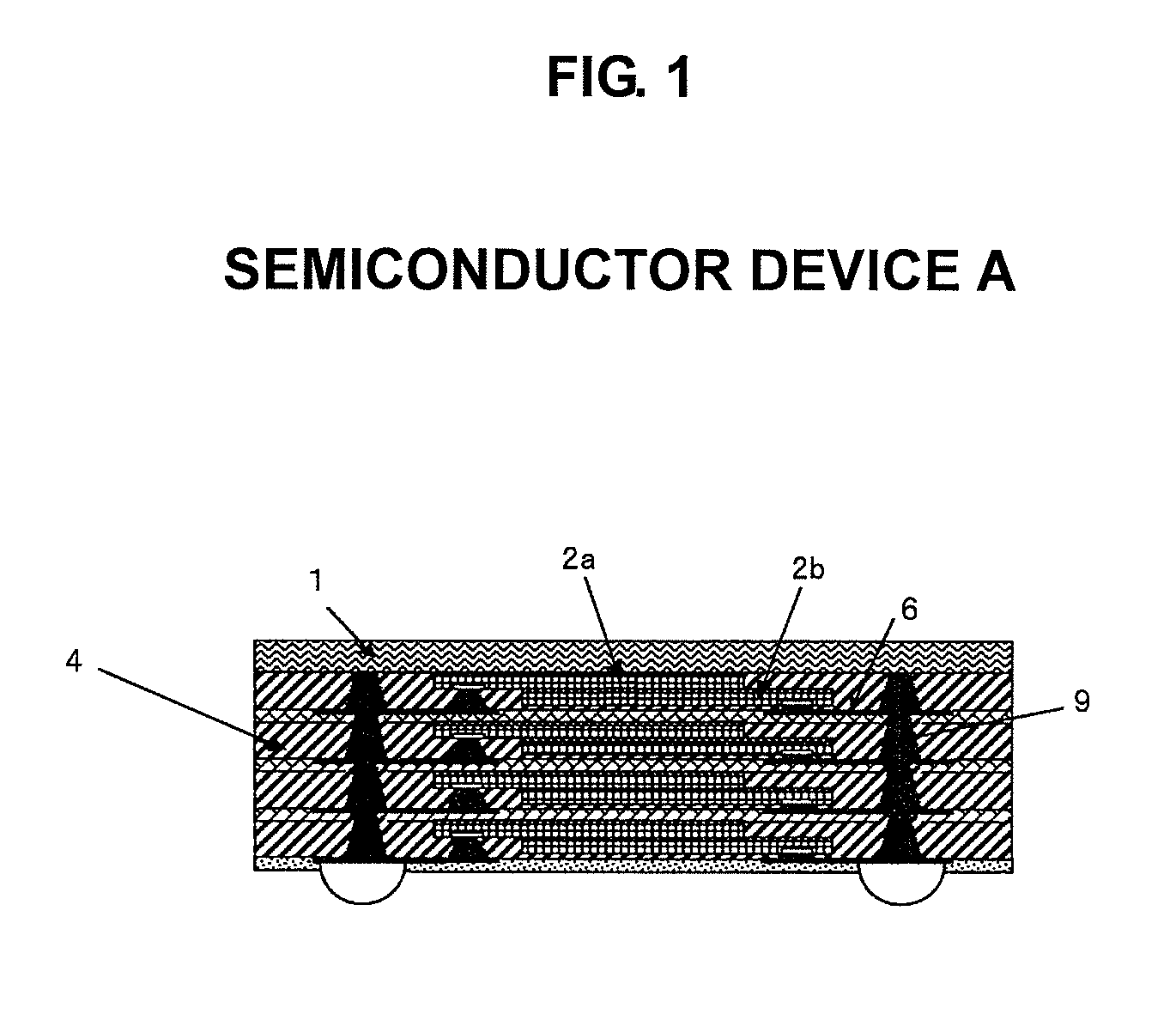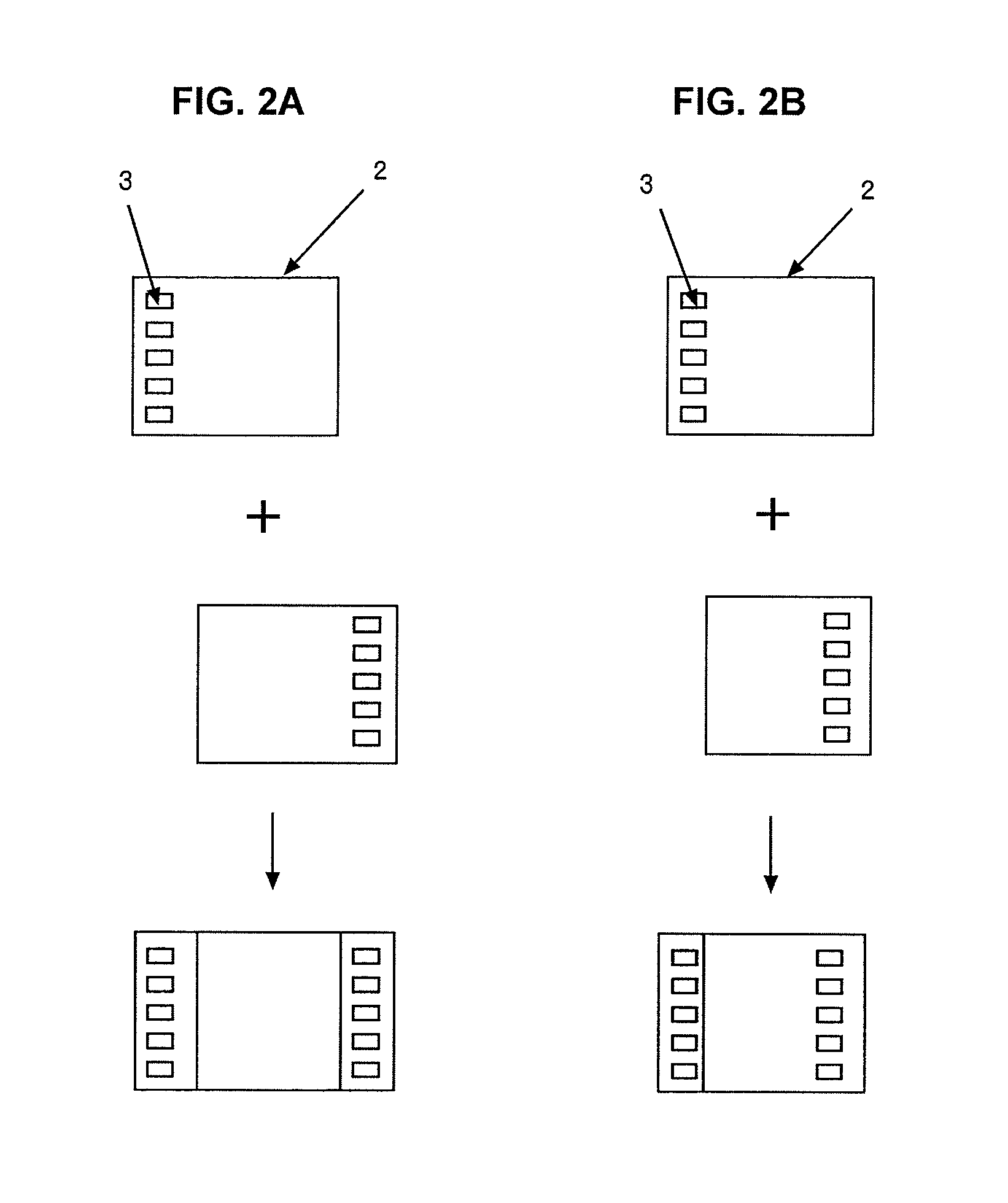Semiconductor device and manufacturing method thereof
a semiconductor device and semiconductor technology, applied in semiconductor devices, semiconductor/solid-state device details, electrical devices, etc., can solve the problems of limiting the number of simultaneous operation of two semiconductor elements, the size of the semiconductor device becomes large, and the inability to skip simultaneous operation, so as to reduce the number of manufacturing steps and small and thinner semiconductor devices.
- Summary
- Abstract
- Description
- Claims
- Application Information
AI Technical Summary
Benefits of technology
Problems solved by technology
Method used
Image
Examples
embodiment 1
[0098]FIG. 1 is a diagram showing the configuration of Semiconductor Device A of Embodiment 1 of the present invention.
[0099]As shown in the diagram, this Semiconductor Device A includes semiconductor elements 2a, 2b, an insulating material layer 4 for sealing the semiconductor elements 2a, 2b and their peripheries, a metal thin film wiring layer 6 provided in the insulating material layer 4 and in which a part thereof is exposed on the external surface, and metal vias 9 provided in the insulating material layer and electrically connected to the metal thin film wiring layer. Reference numeral 1 represents a metal support substrate.
[0100]In addition, the two semiconductor elements 2a, 2b are stacked and provided to the insulating material layer 4, and the structure is such that one metal thin film wiring layer 6 is provided to the two semiconductor elements.
[0101]The two semiconductor elements 2a, 2b are stacked via the insulating material with the circuit surfaces thereof facing the...
embodiment 2
[0128]Semiconductor Device B of Embodiment 2 uses an organic support substrate 1′ in substitute for the metal support substrate 1 in the Semiconductor Device A of Embodiment 1 as shown in FIG. 4.
[0129]While the metal support substrate is advantageous in terms of heat-release properties and that it can be connected to GND, there are drawbacks in that the workability is inferior and hole-making is difficult, and it is difficult to provide insulation. Thus, it is difficult to mount another semiconductor package or electronic component on the metal support substrate.
[0130]Meanwhile, an organic support substrate made from an organic compound material such as glass-reinforced epoxy resin is advantageous, in comparison to a metal support substrate, in terms of favorable workability such as hole-making, and having insulating properties. Thus, as shown in FIG. 4, as a result of opening through-holes and providing electrical connection parts, it is possible to mount passive components such as...
embodiment 3
[0131]With Semiconductor Device C of Embodiment 3, as shown in FIG. 5, the organic support substrate 1′ used in Embodiment 2 is provided to the solder balls 13 mounting side.
[0132]This structure is able to achieve a face-up structure (semiconductor element circuit surfaces face the mounting face) as in the case of using wires for wiring, and it is easy to achieve the same terminal arrangement as in Embodiment 2.
[0133]Moreover, there is also an advantage in that the lower side is compatible with the motherboard since it is the organic support substrate.
PUM
 Login to View More
Login to View More Abstract
Description
Claims
Application Information
 Login to View More
Login to View More - R&D
- Intellectual Property
- Life Sciences
- Materials
- Tech Scout
- Unparalleled Data Quality
- Higher Quality Content
- 60% Fewer Hallucinations
Browse by: Latest US Patents, China's latest patents, Technical Efficacy Thesaurus, Application Domain, Technology Topic, Popular Technical Reports.
© 2025 PatSnap. All rights reserved.Legal|Privacy policy|Modern Slavery Act Transparency Statement|Sitemap|About US| Contact US: help@patsnap.com



